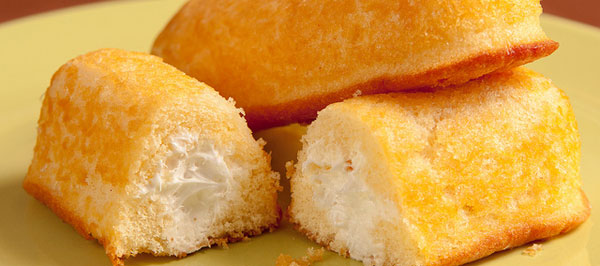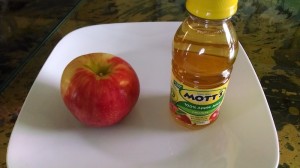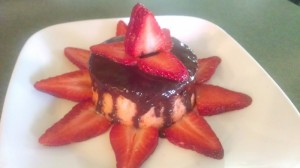 My personal belief in dieting has evolved to this:
My personal belief in dieting has evolved to this:
(1) Eat healthy in the right “ballpark” amounts 90% of the time and leave a 10% margin for “treat” eating we all enjoy.
(2) Exercise, or just move meaningfully (a total of at least 30) everyday in someway. I’m so addicted to the afterglow of exercise that I do an hour a day!
(3) Allow enough time for daily recovery, i.e. sleep and downtime.
(4) Be aware when you are in the “overly-stressed” or “sleep deprived” mode when making food choices.
Follow these guidelines and you will lose weight as a side benefit, without stressing over what the scale says in the morning. Of course, there are times when we all don’t or can’t follow this template to a “t”. That is understandable. It’s also life, isn’t it? Complete with all it’s inherent unpredictability.
This template has served me well over the last 20 years. However, it wasn’t always that way. I was a fat kid who was made fun of on the playground. In my teen years I was what you call a “chronic” dieter. I bet I tried every diet on the market, including my own version of starvation. I would lose weight but then gain it right back. I worshiped at the altar of the scale. In my adult years I joined Weight Watchers a number of times and again, played those scale games.
I finally got my act together when my husband suffered a health crisis. In his recovery phase we both embraced alternative and lifestyle medicine, delving into the powerful effects they can have. I learned that eating provides the building blocks for your health and that nutrition shouldn’t be played with, like I did all those formative years of my life.
Along the way, I’ve developed a mantra called, “N. W. T. C.”, short for, “NOT WORTH THE CALORIES.” I’ve gotten a lot pickier about what I eat. I look at everything I eat for it’s health value. If there is negligible significance, except empty calories, I go through a quick test to discern if it is worth it.
N. W. T. C. PROTOCOL:
I. N. W. T. C. Scrutiny Test- There are two types of scrutiny tests you apply to all foods you’re considering eating: “health” and “treat” foods:
(1) N. W. T. C. Health Foods- These are everyday foods that you rely on for sustenance and staying power for your body and brain. I look at each food for it’s overall value based on the amount of calories, sugar, fiber, protein, fat, vitamins and minerals it provides. If there is a healthier version within the same category of food based on that profile, I adopt it as my go-to food. I don’t know each food by its exact numbers, but have developed a pretty good idea of the healthier choice. Here is an example; if I want a fruit, I go for the direct source, not the liquid version. This apple provides about 116 calories, 5.4 g of fiber and 23g of sugar. This container of apple juice provide 120 calories, 0 grams of fiber and 28 grams of sugar.
To me, most liquid calories are not worth it. In this case, trying to get your daily fruit allotment through juice is truly a waste of time. The fiber in the fruit is not only good for you, it fills you up. The liquid version has a higher sugar content that keeps you coming back for more.
Another waste of calories is plain old white bread. It offers you: little or no fiber and negligible nutrients. The worst part about this choice is that it doesn’t fill you up (just like the apple juice I mentioned above). Mulitigrain, on the other hand, offers 3 g of fiber per serving, key B vitamins and a nutty, earthy taste that will fill you up.
I know we have all been in those circumstances where there is no other choice but white bread (i.e. fundraisers, your kid’s sport’s events). So if it’s the only meal you are going to consume that night, forget the bread, get out a fork and consume the protein only!
(2) N. W. T. C. Treat Foods-Now remember what I said about that 10% rule; it’s really okay. You don’t have to feel guilty about indulging in treats based on the 90/10 rule. They just need to pass the “worth it” test. So let’s just compare desserts that are worth it and ones that aren’t.
Look at this little treat we are all familiar with, they come 8 to a package.
If you wanted to, you could eat the whole box when you get home and no one but you knows. I know this game because I played it many times. Everything from boxes of Little Debbie’s to whole boxes of Girl Scout Cookies. You could buy quite a few little treats like this for very little money.
Let’s compare those treats with this treat:
Full disclosure, I did not make this spectacular dessert, it was made by the culinary students at Indian Hills Community College, with the guidance of Pastry Chef Mark Fisher. I’m just making the point that if you make a special dessert to eat at home or you go out to eat and order an exceptional dessert, then it is just that, “W. T. C.” (WORTH THE CALORIES) food. Deserving the treat status that it is. It is also something you can look forward to on another occasion, without the guilt following the entire box of cheap, no-effort desserts that you ate on a whim, without thinking. Hey, understand I have been there, done that!
Special Note-Little individual desserts you make for “at home consumption” are not as tough to “Say No” to a second helping to as the large desserts with lots of leftovers, i.e. sheet cakes. However, if you do have a great deal of dessert leftovers, and are tempted, freeze it immediately and throw it in the back of the freezer for “uneasy” access.
II. N. W. T. C. Trap Test-This is a test you might have to be a little sneaky with. This is a social pressure type of test: to eat foods that you don’t really like or are trying to limit. You all might experience this type of test this Sunday on Easter with your relatives. So here is the scenario: Aunt Minnie made the entire meal. It was a feast. You could easily stay true to your healthy eating by mainly consuming the protein and vegetables and take little helpings of the starchy carbs. The problem came in when Aunt Minnie insisted, meaning she served you the portion SHE wanted you to have (you wanted just a little helping), of all the desserts on one plate.
You have a couple of options here:
1) You can just nibble on the desserts and at the same time make sure you are deep in conversation with all of your relatives so no one notices.
2) Just nibble on the desserts and when you have only eaten the portion YOU wanted in the first place, excuse yourself with your plate. This is a great time to visit the kitchen and dispose of your unwanted cake, then visit the bathroom. By the time you get back, everyone will be done. You can help take everyone else’s dish to the kitchen.
These both work on two counts: 1) You have limited your N. W. T. C. foods. 2) You don’t hurt anyone’s feelings!
III. N. W. T. C. Stress Test– It is imperative that you be aware of your state of hunger when you are choosing your W. T. C. (WORTH THE CALORIE) foods. You all have experienced the scenario of arriving at the supermarket famished. You end up buying quite a few more items than you counted on strictly because you are famished. That awareness needs to be with you constantly when choosing your food choices for the day. Your heightened state of hunger might have more to do with your stress level or lack of sleep (see Lack of Sleep: Medical and Economic Consequences) than true hunger. Before you go overboard, slow down and ask if you’re really just stressed or just need to catch some more zzzzzzzzzs.
Okay, you’ve now gone through the N. W. T. C. Protocol for picking that N. W. T. C. pleasure food. You are sitting down with a treat you enjoy, without guilt, following that 10% rule of thumb.
Ahhhhhhhhhh! Definitely W. T. C.!!!!!!!!
Btw, I did make this.







